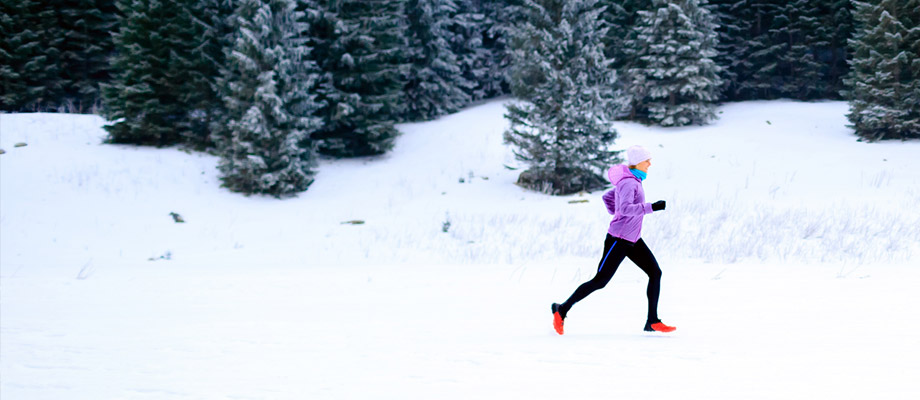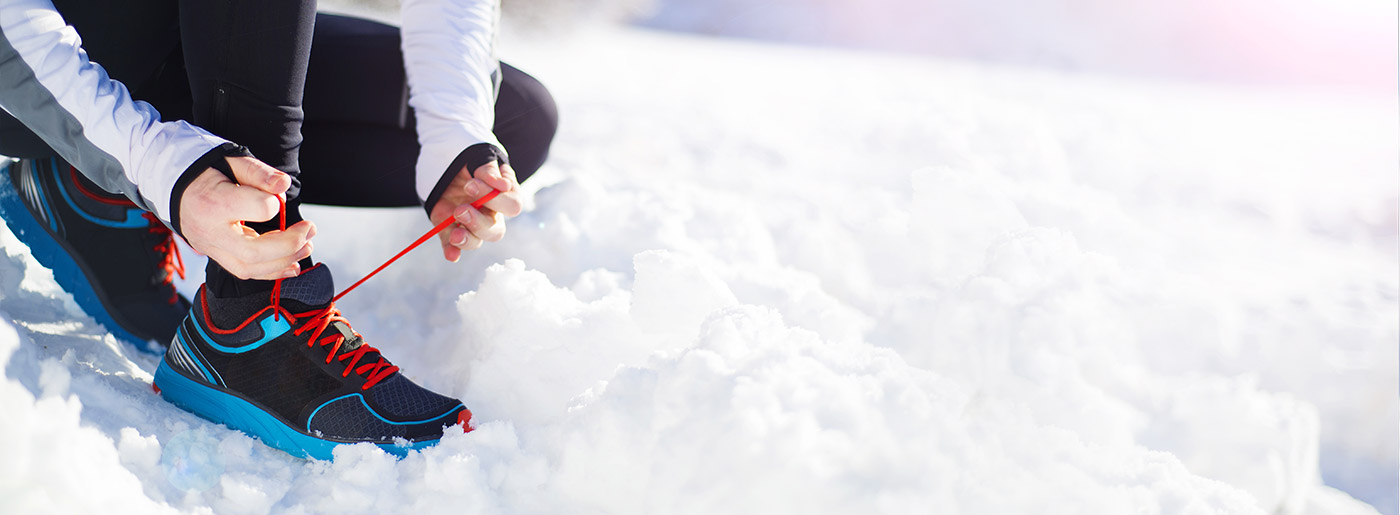Winter running can be a challenge even when it’s a little cold, but what about when it’s really cold, like really?
There have been fan theories claiming that Finland – Polar’s country of origin – doesn’t exist, but we assure you that Finland is a (real) country where being a runner requires (real) attitude. The Finnish winter lasts from 3 to 6 months and you’re often forced to push forward despite the weather conditions outside.
The winter temperatures in Finland range between 41 and –13°F (+5 … –25 °C). Those wondering what –13°F feels like can try to imagine living inside a huge deep freezer with aurora borealis, snow and plenty of personal space.

The terrain changes from day to day: sometimes you’ll be running on a nice blanket of hard-packed snow while often you’re forced to run in slush or on ice. Many are happy to change their sneakers for skis in winter, but those who want to run all year round have found their own ways to cope.
How cold is too cold for winter running?
Cold air grates the lungs differently during the winter and it’s not worth pushing it to the limit on slippery surfaces to keep your legs in shape. But how cold is too cold for running?
Well, temperature limits for running in the cold are very personal. Some runners find the weather too cold for running when the thermometer dips below 14°F (–10 °C), others can easily go down to -4°F (–20 °C). In these conditions, however, more vigorous workouts should be done in the gym or on a treadmill.
The first rule of winter running is to lower the intensity of your training sessions the colder it gets.
During the winter, many runners focus on improving their basic fitness. They up the amount of training in the spring as the snow starts to melt, the air gets warmer and and the harder terrain enable harder runs.
Running gear for the winter
You should be careful upon the arrival of the first signs of winter. In particular, the slipperiness of roads and the unevenness of the terrain impact the runner in varying degrees.
It’s easy to be place your feet too gingerly in the absence of sure footing and the relaxing sensation from running becomes lost. This often leads to cramps as a by-product.
In Finland, a large percentage of runners wear studded running shoes designed for winter conditions, whose pins and base material on the bottom bite into the terrain, providing traction and control. Winter running shoes are also suitable for street and path usage.
In addition, wearing layers and studs and using running gear especially designed for winter running help make colder weather conditions manageable. Sometimes the cold air you breathe in is a challenge. Some runners use air warmers or buffs to help with breathing.
If you ever find your way to Finland (maybe through your grandma’s magical wardrobe), you shouldn’t be surprised to see runners happily running in extreme conditions because they have perfected the craft of wearing enough but not too much.
Shielding yourself from the cold
It’s essential to dress in clothes that protect cold-sensitive areas and prevent the emergence of injuries. In particular, gaiters to protect the ankles and Achilles tendon should be every winter runner’s number one priority. Layering and high-quality technical undergarments and running clothes will help you tackle the challenges of winter and maintain the pleasure of running without the sensation of suffocation even in cold weather running conditions.
Be sure to dress so that at the beginning of the run you’re a little cold, and that only after some time you start to feel comfortably warm.
Be sure to dress so that at the beginning of the run you’re a little cold, and that only after some time you start to feel comfortably warm.
If you don’t get a little cold after you step out the door, you most likely have too much clothing. You’ll start sweating a lot in the second half of the run and your back will be drenched which can cause you to catch a cold.
Running in knee-deep snow
If you crave different, intensive workouts during the midwinter moments, you can look for mental and physical toughness from running in knee-deep snow. Going knee-deep and a little deeper, combined with relaxed interval training, is a great workout whose difficulty you can recall during the most difficult moments of summer running events.
Here’s how to get started:
- Find a field of fresh snow
- Check that the snow’s not too deep (knee-deep is okay)
- Check that there are no surprises lurking under the snow (sports fields or parks are usually fine)
- Start running, taking it slow if it’s your first time.
Training in the snow engages the muscles in a new way, providing a slight resistance to running and adding, in particular, the lifting of the knee. You can start with a few minutes of repetitions and test how the knee rises. Also, just a light jog in thick snow is a good variation to normal running.
If you can’t find a field of fresh snow to test these winter running tips in, you can always book a trip to Finland. They key to finding this wintry wonderland is first believing in it.
If you liked this post, don’t forget to share so that others can find it, too.
Or give it a thumbs up!
I like this article
Please note that the information provided in the Polar Blog articles cannot replace individual advice from health professionals. Please consult your physician before starting a new fitness program.





